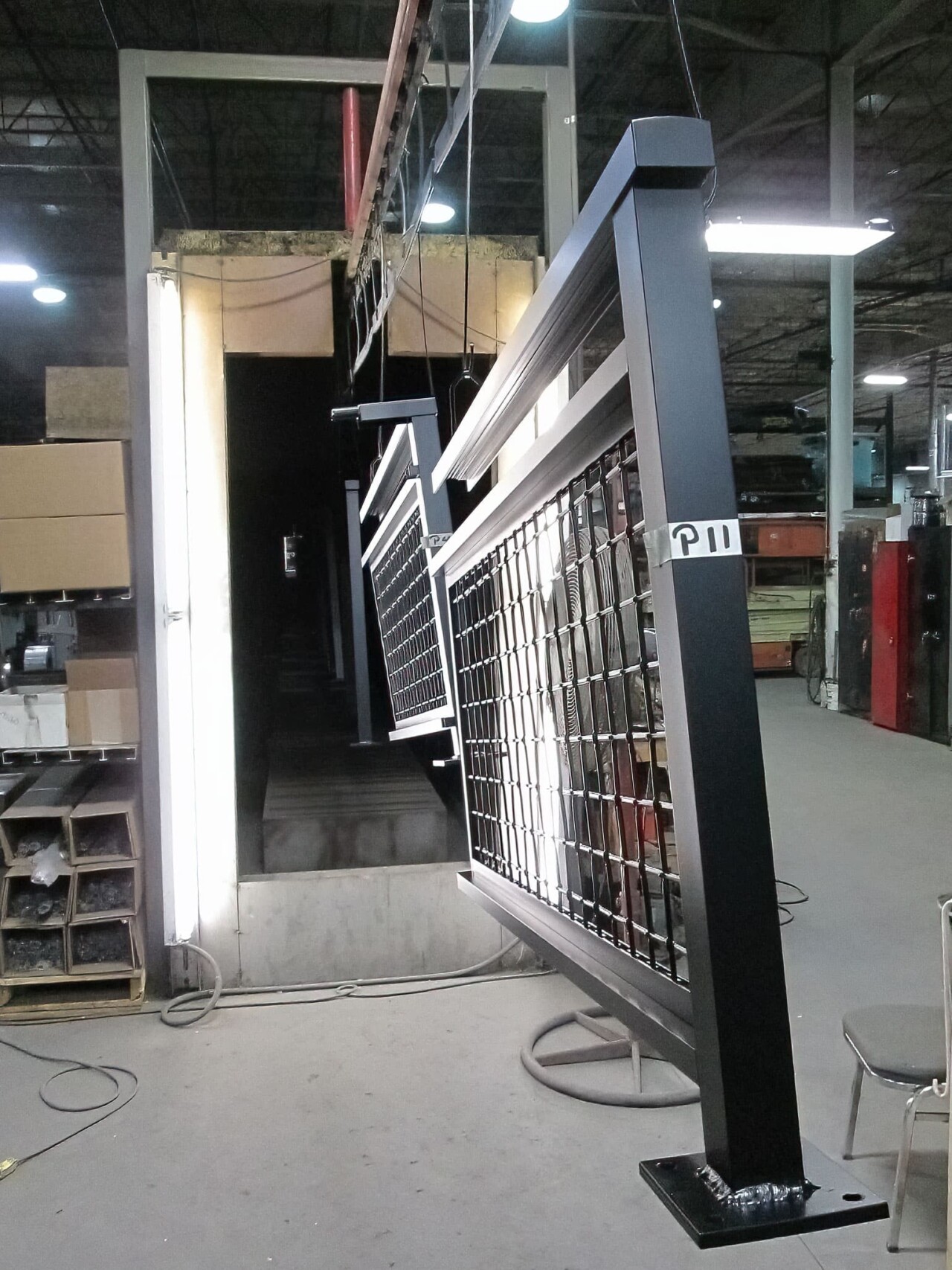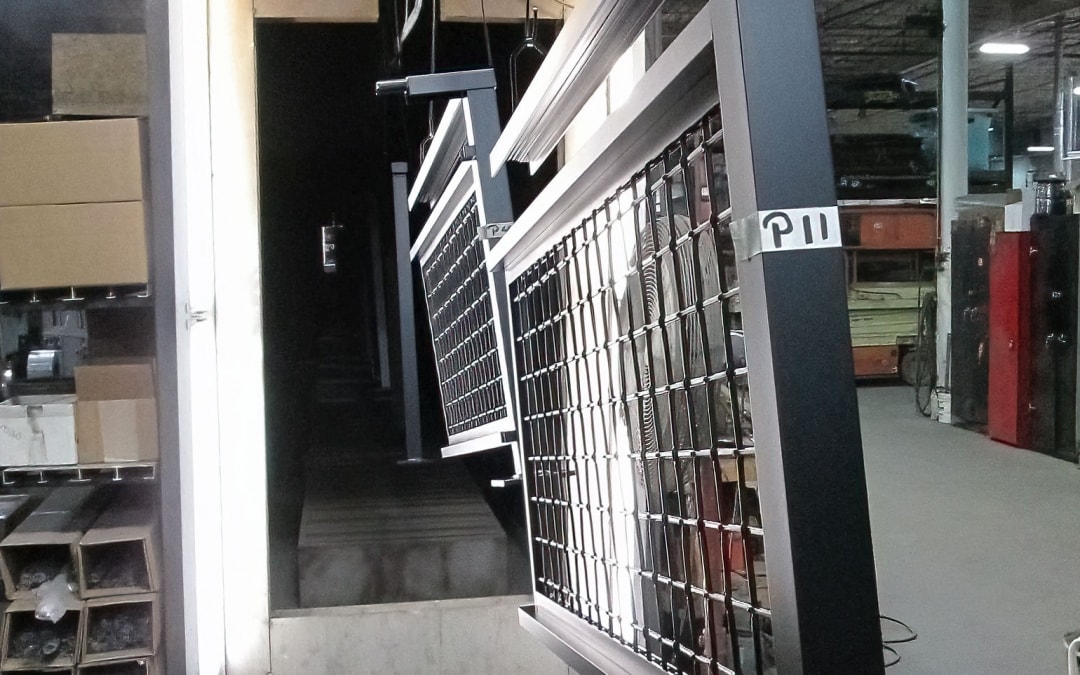AAMA Spec Finishing Services from Advanced Finishing USA

AAMA Specifications, and what they mean to you!
Finishing is one of the last links in the chain of production for almost any product made and sold on earth. Regardless of the material it is made from, be it metal, stone, ceramic, wood, polymer, or paper, it goes through a structured process from start to finish. At Advanced Finishing USA, we are Finishers! We specialize in making sure a completed product is property finished to look great and function reliably. Generally, the finishing process is the last, and one of the most important steps in the process of making products. Without proper finishing, even the most thoughtfully designed and efficiently manufactured product will not last. The material being finished will define the right finishing process from our repertoire. Below, we will outline some of the considerations that go into selecting the right finishing process of ours to use for a given job. By offering wood grain powder coating services, epoxy and polyester powder coating, and industrial painting, the AAMA spec finishing work we can complete is extensive.
When it comes to the finishing of metal products, the process used is dependent on the type of metal being finished. Different types of metals require different finishing processes to achieve the desired ultimate properties and attributes. For example, Aluminum is used to make an incredible number of products in today’s world marketplace. One of the common uses of aluminum in the 21st Century is for architectural applications, such as doors, windows, railings, etc. Aluminum is strong, light, easily manipulated, and has good corrosion resistance in its bare form. An iron angle left unfinished in the elements will begin rusting within a day or two. An aluminum angle left unfinished in the elements may last months or years before showing substantial signs of corrosion and oxidation. This natural resistance to corrosion makes aluminum an ideal metal for architectural projects, and giving them the proper finish makes them considerably better. They will not only exist in the elements of wind, water, temperature changes, and of course damaging ultraviolet radiation, but will also function for many years, and require little to no maintenance.
Most finishing processes include the following steps: cleaning, preparing, or pre-treating, and application of the finish. The higher the expectations of life and function of the product in the intended environment, the more important the details of these processes become. Some products can simply be wiped off with a solvent or cleaner, while some products may require a multi-step, carefully controlled chemical and mechanical pretreatment. Some products use finishes that can simply be dipped or brushed on and air dried, while others may require a complicated precision application with a specific curing or catalyzing cure process. The higher the expectations for performance, the more complex and critical the steps and controls.
Finishes to architectural aluminum generally have two functions:
- Make it look good.
- Make it last a long time.
The appearance of the finish will usually be defined by the color, gloss, texture, and special effects of the material used in the finishing process. Anodizing is very common, and is an excellent finish for aluminum, but for most architectural applications, it is limited in options for color, gloss, and appearance. Industrial painting, like anodizing, can provide an excellent finish for architectural aluminum, and does come in a variety of colors and glosses. Powder coatings are also an excellent choice for finishing architectural products, they come in a variety of colors and glosses, but also have the added benefit of texture and effects, such as sublimation of wood grain, stone, marble and other images and patterns.
Architectural coatings are classified into 4 specific categories to meet the specifications put forth by the American Architectural Materials Association (AAMA).
They are:
- AAMA 611 (for anodic finishes)
- AAMA 2603 (Basic level of performance)
- AAMA 2604 (Intermediate performance)
- AAMA 2605 (Superior performance)
These specifications are necessary to assure that the materials used for architectural aluminum projects will perform at the expected level for the desired lifetime of the project. An aluminum handrail in a basement stairway is easily replaced or repaired, while a window frame on the 135th floor of a high rise is not so accessible.
The details of each of these specifications is further explained as follows. AAMA 611 will not be addressed in this article as AFUSA does not provide anodizing for architectural aluminum. Tests are usually done on standardized aluminum panels in controlled experiments. Results are extrapolated to project actual real world performance.
AAMA spec parameters can be generalized to include the following:
- Color retention (Loss measured by fade of color in Delta E color shift over a period of years)
- Gloss retention (Loss measured in % at 60 degrees over a period of years)
- Salt spray performance (corrosion at a scribe in salt fog chamber device over a number of hours)
- Length of Warranty in years
Color and gloss retention are approximated to reflect actual exposure to the sun in south Florida. Some tests involve putting panels in Florida facing west to get maximum UV exposure from the sun and elements.
AAMA 2603. 1 year CR, No spec for GR, 1,500 hrs SS, 1 yr
This is the basic, and minimal specification for architectural aluminum finishing. Cleaning and pretreatment may only require washing to remove dirt and oil. Coatings have no specification of content or performance, and are generally low cost applications. Products meeting this specification may include internal wall and stair railings, ceiling panels, curtainwall and structural materials that will not be exposed to the outdoor elements.
AAMA 2604. 5 year CR 5DE, 5yr 30% GR, 3,000 hrs SS, 5 yr
The AAMA 2604 Spec is the intermediate and most common specification for architectural aluminum finishing. Cleaning and pretreatment will require at least a detergent cleaner at an elevated temperature, some form of conversion coating to protect the aluminum from oxidation, and clean water rinses to assure the cleaned and pretreated product is properly prepared for coating. Coatings are generally high performance polyester or polyurethane based with superior UV stability, and will be moderately to higher priced. Products meeting this specification may include lamp posts, playground equipment, balcony railing, and street level curtainwall, windows and doors.
AAMA 2605. 10 year CR 5 DE, 10ys 50% GR, 4,000 hrs SS, 10 yr
The AAMA 2605 Spec is the highest level, and most difficult specification for architectural aluminum finishing. Cleaning is the essential first step to achieving this rating. Use of chrome based pretreatments has become environmentally difficult and requires permitting, but there are many adequate non-chrome pretreatments available on the market. Reverse osmosis or deionized water rinses are required to assure the final product leaves the wash cycle perfectly clean. Coatings must contain at least 70% fluoropolymer to assure the UV stability for color and gloss retention. These coatings are very expensive, usually custom made for color, and have minimum order quantities. Sometimes, the cost of the coating material is higher than the cost of application and shipping! Products meeting this specification may include high profile architectural projects, stadium seating and railing, and high-rise building windows.
In closing, the final performance and lifespan of the products finished to these specifications is directly proportional to the cost, time and equipment required to apply each. Having an experienced finishing team complete the work will ensure it performs as intended. If you are not set up to run AAMA 2605, do not try to “wing it” in hopes it will work. The warranties and guarantees required by builders and architects are very clear on performance and penalties can be costly both financially and reputationally. When we observe a coating failure out in the field, it can generally be attributed to a failure of the finisher rather than the finish. If you want an AAMA 2603, 2604, or 2605 spec finishing job done right, contract Advanced Finishing USA.
The following is an easy to view breakdown of three AAMA Specs and their characteristics:
| TEST | AAMA 2603 | AAMA 2604 | AAMA 2605 |
| Humidity | 1500 hours | 3000 hours | 4000 hours |
| Salt Spray Resistance | 1500 hours | 3000 hours | 2000 hrs aggressive |
| Florida Exposure | 1 year | 5 year | 10 year |
| Color Retention | Slight Change | Delta E <5 | Delta E <5 |
| Chalk Resistance | Slight Change | Less than #8 (ASTM D4214) | Less than #8 (ASTM D4214) |
| Gloss Retention | Slight Change | Minimum 30% | Minimum 50% |
